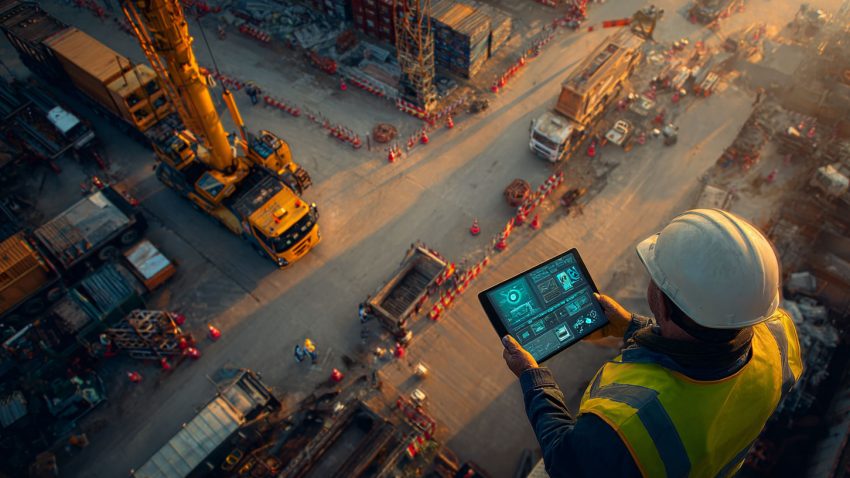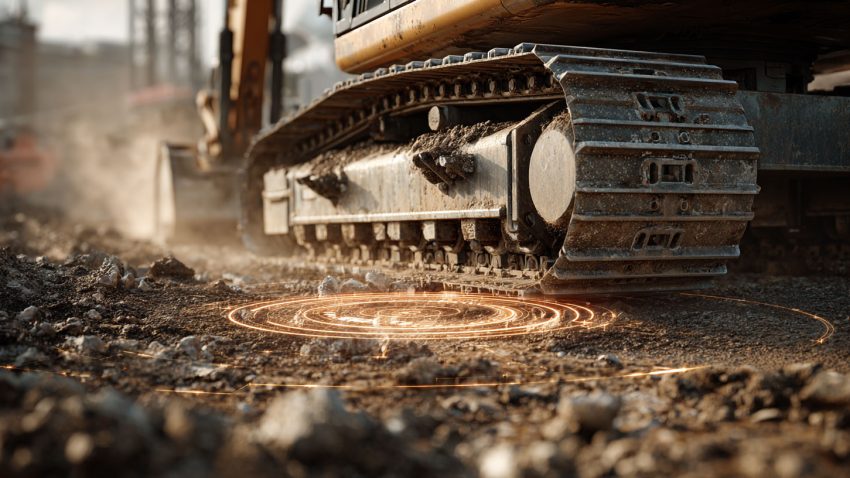Data Center Construction Deliveries: Best Real-Time Tracking Solutions for Managing Data Center Construction Deliveries
Table of Contents:
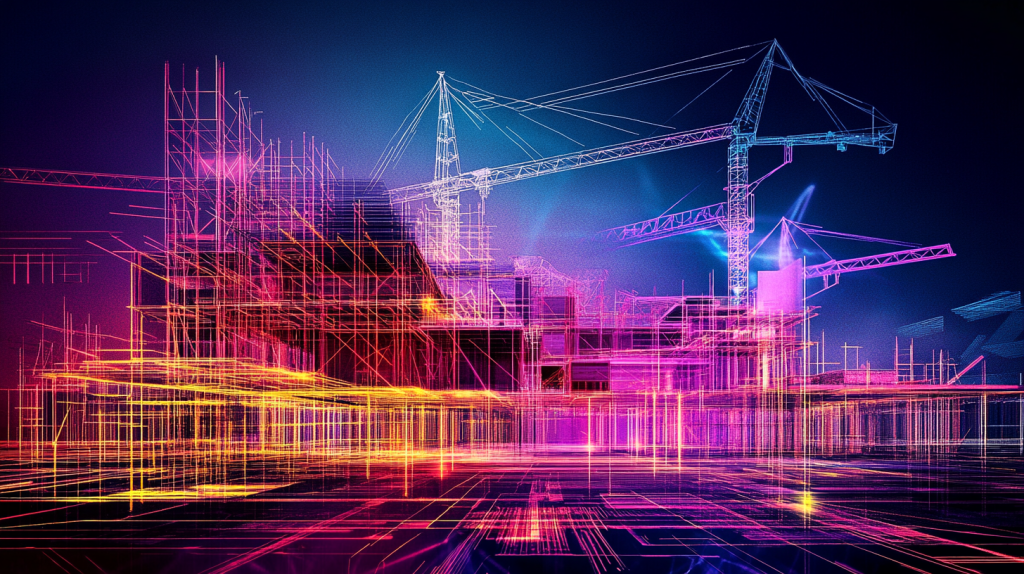
The construction of data centers demands precise material deliveries to meet tight schedules and operational requirements. These projects involve high-value components, including HVAC units, power systems, IT racks, and cooling infrastructure, all of which must be delivered on time and in the correct sequence to avoid costly bottlenecks. However, with multiple suppliers, staggered shipments, and complex installation schedules, tracking and managing these deliveries efficiently remains a major challenge.
To ensure seamless material flow, data center construction teams must adopt real-time tracking solutions that provide full visibility into shipments, reduce the risk of misplaced equipment, and improve overall project coordination. Technologies such as RFID tags, GPS tracking, and cloud-based delivery management platforms allow superintendents and project managers to monitor material movement, optimize storage, and ensure precise timing for just-in-time deliveries. By integrating these solutions into construction logistics, teams can significantly enhance efficiency, minimize project risks, and prevent costly supply chain disruptions.
In this guide, we’ll explore seven key strategies for improving real-time tracking of data center construction deliveries, including advanced tracking technologies, AI-driven logistics, predictive analytics, and digital twin technology. These best practices will help construction managers, suppliers, and subcontractors work in sync to ensure materials arrive on time, intact, and ready for installation, avoiding costly delays and inefficiencies.
How Real-Time Tracking Enhances Data Center Construction Deliveries
Real-time tracking solutions provide construction teams with instant visibility into the movement of materials and equipment, ensuring that every delivery reaches the right location at the right time. Without effective tracking, delays, misplaced shipments, and workflow bottlenecks can significantly impact project efficiency. For data center construction, where projects rely on precisely sequenced material deliveries, real-time tracking is no longer optional—it’s essential.
One of the biggest advantages of real-time tracking is delivery synchronization. When contractors know exactly when shipments will arrive, they can plan labor and installation accordingly. This prevents materials from sitting idle on-site, reducing storage congestion and ensuring just-in-time installations. Additionally, real-time notifications and alerts help construction teams proactively address potential disruptions, such as delayed trucks or rerouted shipments.
Key Benefits
- Enhanced Delivery Precision: Reduces lost shipments and scheduling conflicts.
- Minimizes Project Delays: Real-time insights enable proactive decision-making.
- Improves Resource Allocation: Ensures materials arrive as needed for construction phases.
Best Practices
- Implement RFID for Inventory Tracking: Automate material check-ins.
- Use AI-Powered Scheduling Tools: Optimize delivery timing.
- Centralize Delivery Data: Use StruxHub for end-to-end tracking.
With real-time tracking, data center construction teams can improve material flow, prevent delivery mishaps, and streamline site operations, ensuring projects stay on schedule.
Related Articles:
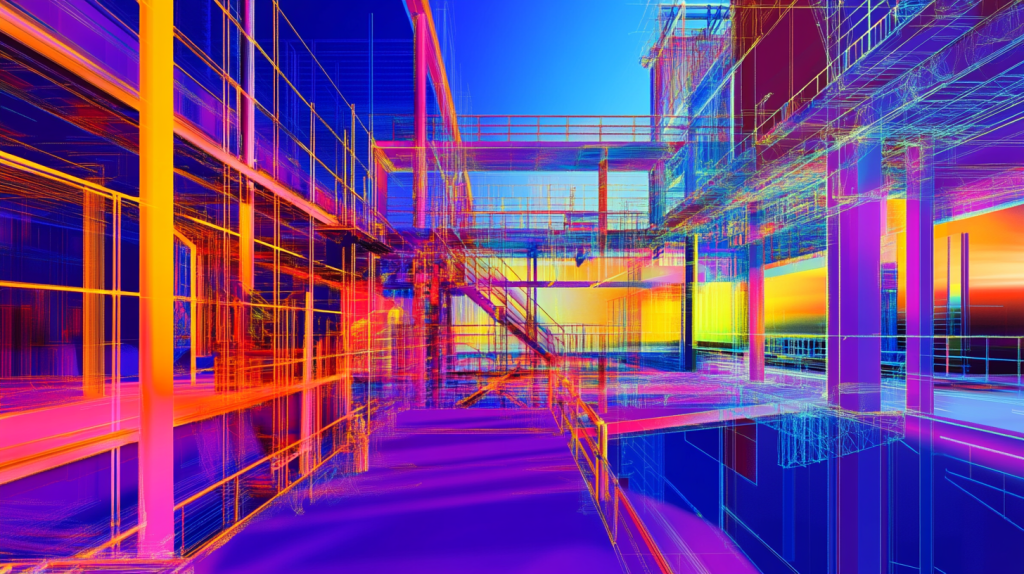
Top Real-Time Tracking Technologies for Data Center Deliveries
Construction logistics have evolved rapidly, with cutting-edge tracking technologies replacing manual logs and outdated spreadsheets. For data center projects, which often require hundreds of critical shipments, adopting the right technology is essential for avoiding delays and costly inefficiencies.
The most widely used tracking solutions include RFID tags, GPS fleet tracking, barcode scanning, and AI-powered delivery management systems. RFID (Radio Frequency Identification) tags allow real-time logging of equipment upon arrival, while GPS tracking provides live location updates for trucks in transit. Barcode scanning tools ensure that every item is correctly logged in an inventory management system, preventing misplacements and discrepancies. Cloud-based delivery platforms, such as StruxHub, integrate these technologies into a single, streamlined system, enabling seamless real-time tracking and data analysis.
Key Benefits
- Automated Logging & Verification: Reduces manual errors.
- Optimized Logistics Planning: Ensures delivery schedules align with project milestones.
- Enhanced Collaboration: Digital tools improve communication between vendors, contractors, and site managers.
Best Practices
- Use RFID-Enabled Sensors: Improve real-time inventory visibility.
- Leverage Cloud-Based Logistics Tools: Automate tracking updates.
- Set Up Real-Time Alerts: Notify teams of shipment status changes.
By adopting cutting-edge tracking technologies, data center construction managers can enhance supply chain efficiency, improve communication, and reduce costly mismanagement issues.
Strategies for Managing Large-Scale Data Center Material Deliveries
Managing large-scale material deliveries for data center projects requires meticulous planning, vendor coordination, and storage optimization. With multiple contractors, staggered shipments, and the need for precise installation timing, poor material delivery management can derail the entire project.
A critical strategy for managing large-scale deliveries is implementing a just-in-time (JIT) scheduling approach. Instead of stockpiling materials on-site, JIT ensures that deliveries arrive only when they are needed, minimizing storage issues and material degradation. Additionally, collaborating with multiple suppliers and transport providers allows project managers to develop backup plans in case of delays or unforeseen disruptions.
Key Benefits
- Reduces On-Site Congestion: Minimizes excess materials on active work zones.
- Ensures Timely Installation: Syncs deliveries with construction progress.
- Improves Vendor Reliability: Establishes accountability with suppliers.
Best Practices
- Use Just-in-Time Delivery Strategies: Avoid premature arrivals that create storage problems.
- Monitor Supplier Performance: Ensure vendors meet scheduled deadlines.
- Implement Digital Inventory Control: Track materials using StruxHub.
Strategic material delivery management eliminates inefficiencies, reduces waste, and improves overall site logistics, ensuring seamless data center construction workflows.
Reducing Supply Chain Risks with Predictive Analytics
Supply chain disruptions—such as vendor delays, transportation issues, or material shortages—can impact data center construction timelines. Predictive analytics provides data-driven insights to anticipate risks and optimize supply chain decisions. By analyzing historical data, weather conditions, traffic patterns, and supplier performance metrics, predictive analytics can forecast potential delays and suggest alternative sourcing strategies before disruptions occur.
With real-time tracking and AI-powered predictive modeling, construction managers can proactively adjust schedules, reroute shipments, and engage backup suppliers when necessary. This prevents last-minute procurement issues and minimizes construction delays caused by unexpected material shortages. Predictive analytics can also identify patterns in supplier performance, helping construction teams choose vendors that consistently meet delivery expectations.
Key Benefits
- Proactive Risk Mitigation: Identifies supply chain vulnerabilities before they cause delays.
- Optimized Material Sourcing: Provides insights into alternate vendors to ensure project continuity.
- Improved Cost Efficiency: Reduces excess storage costs and unnecessary rush shipments.
Best Practices
- Implement AI-Driven Predictive Models: Use analytics to assess potential supply chain risks.
- Maintain Alternative Supplier Networks: Reduce dependency on a single vendor.
- Use Cloud-Based Data Integration: Centralize supply chain insights using StruxHub.
Predictive analytics empowers construction managers to make data-driven supply chain decisions, reducing risks, optimizing deliveries, and ensuring smoother data center project execution.
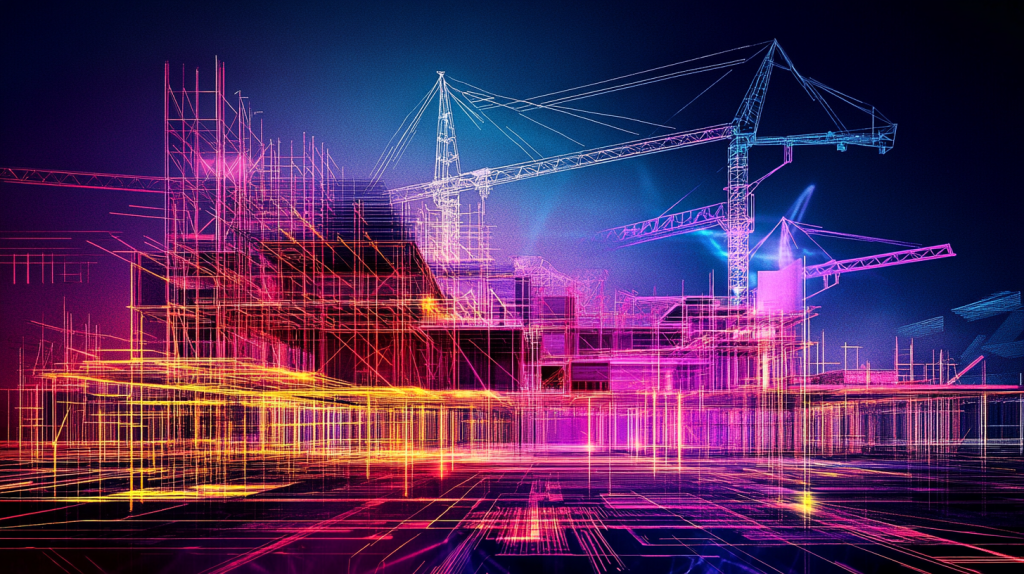
Optimizing Storage Solutions for Data Center Deliveries
Managing storage for data center materials is a critical aspect of delivery logistics. Without a structured storage plan, shipments can become disorganized, leading to delays, misplaced materials, and damage to sensitive equipment. Proper storage management ensures that every component remains intact, easily accessible, and ready for installation at the appropriate phase.
For data centers, storage solutions must account for temperature-sensitive IT equipment, bulky HVAC systems, and heavy electrical switchgear. Materials should be classified based on installation priority, ensuring that critical items are stored in accessible locations. Climate-controlled environments should be designated for server racks and networking hardware to prevent damage from extreme temperatures or dust exposure.
Key Benefits
- Protects High-Value Equipment: Prevents damage to sensitive materials.
- Reduces On-Site Congestion: Organizes storage for streamlined access.
- Improves Inventory Accessibility: Allows quick retrieval for installation.
Best Practices
- Use RFID-Tagged Smart Storage Systems: Automate inventory tracking.
- Implement a Tiered Storage Approach: Assign priority storage zones based on installation phases.
- Ensure Climate Control for Sensitive Equipment: Maintain temperature-regulated storage for IT components.
Optimizing storage solutions improves delivery efficiency, protects materials, and ensures seamless coordination between procurement and installation.
The Role of AI in Construction Delivery Tracking
AI-powered solutions automate delivery tracking, supplier coordination, and predictive scheduling, allowing construction managers to analyze real-time logistics data and optimize procurement workflows. AI algorithms can identify patterns, forecast potential delays, and recommend proactive adjustments, helping teams prevent supply chain bottlenecks before they occur.
By leveraging machine learning models, AI can automate notifications for delays, suggest the fastest alternative delivery routes, and optimize delivery sequencing based on project needs. AI-driven tracking platforms, such as StruxHub, integrate AI to enhance real-time visibility into construction deliveries.
Key Benefits
- Reduces Human Error: AI-driven automation ensures precise tracking.
- Enhances Scheduling Efficiency: Predicts and prevents supply chain bottlenecks.
- Improves Vendor Accountability: Tracks supplier performance over time.
Best Practices
- Use AI-Powered Delivery Platforms: Automate scheduling with StruxHub.
- Integrate AI With GPS & RFID: Improve real-time tracking accuracy.
- Analyze AI Reports for Decision-Making: Use historical insights to optimize future deliveries.
AI enhances delivery accuracy, supplier performance, and logistics management, making data center construction more efficient and predictable.
How Digital Twin Technology is Revolutionizing Construction Logistics
Digital twin technology creates real-time virtual models of construction sites, allowing project managers to simulate and optimize delivery logistics. By using a digital replica of the site, teams can visualize material flows, identify inefficiencies, and predict storage challenges before they happen.
Digital twins integrate data from multiple sources, including GPS, BIM (Building Information Modeling), RFID, and AI-based analytics, providing a comprehensive overview of the entire construction logistics network. These models allow project managers to test different delivery scenarios, ensuring optimal scheduling, efficient routing, and minimized site disruptions.
Key Benefits
- Enhances Real-Time Decision-Making: Provides up-to-date logistics insights.
- Reduces Wasted Resources: Optimizes material movement and storage.
- Improves Collaboration Across Teams: Synchronizes workflows between suppliers and contractors.
Best Practices
- Integrate Digital Twin with Logistics Software: Enhance operational efficiency.
- Use AI-Driven Simulations: Forecast potential supply chain disruptions.
- Leverage Data for Continuous Improvements: Apply insights to optimize construction planning.
Digital twin technology transforms construction logistics, allowing for predictive modeling, optimized deliveries, and seamless coordination.
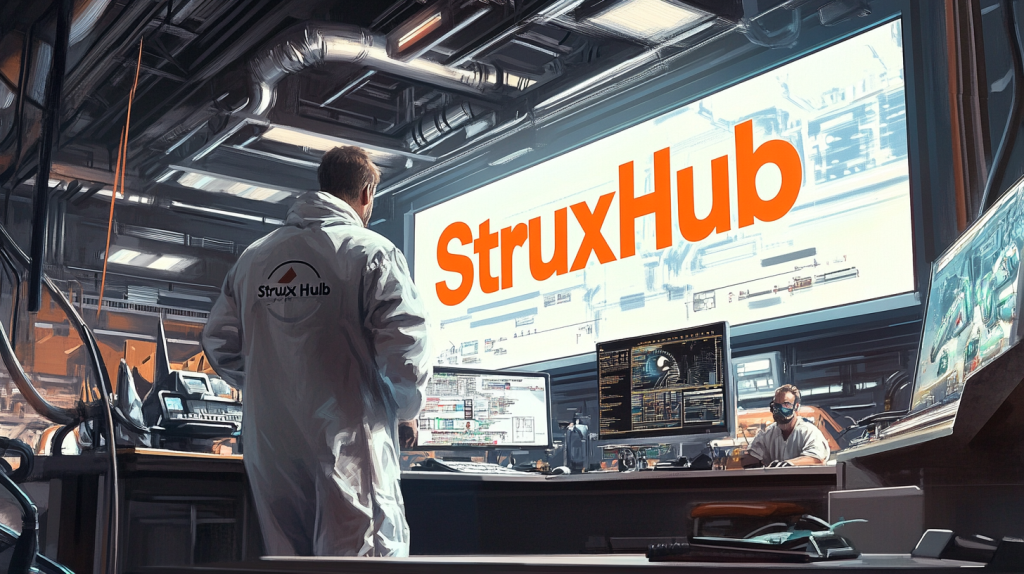
StruxHub
Experience the power of StruxHub today and witness firsthand how it can revolutionize your construction operations.
Unlock the Full Potential of Your Construction Projects with StruxHub
StruxHub enhances efficiency and coordination across all project phases, providing a single source of truth that eliminates silos and fosters collaboration. Real-time updates, financial management tools, and seamless commvunication features ensure that all team members and stakeholders are aligned and informed, reducing the risk of errors and delays. With comprehensive solutions for document management, risk mitigation, and quality control, StruxHub maintains project integrity and safety, while mobile access and integration capabilities further enhance project flexibility and efficiency.
StruxHub’s Key Features and Benefits:
- Advanced Delivery Management: Automate and optimize your delivery schedules, ensuring materials arrive just in time, every time.
- Site Communication: Utilize georeferenced maps and instant messaging to keep every team member informed and aligned.
- Construction Materials Management: Track inventory levels and manage materials procurement with ease, reducing waste and avoiding project delays.
- Construction Safety & Inspection Workflows: Implement customizable mobile forms for conducting safety inspections and managing compliance documentation effortlessly.
- Short-Term Scheduling: Visualize project tasks with detailed floor plans, linking each activity to specific locations for better planning accuracy.
- Construction Resource Management: Efficiently allocate personnel and equipment, maximizing productivity and reducing idle time.
StruxHub’s Product Offering:
- StruxHub Deliveries: Simplifies the coordination of incoming deliveries, ensuring materials and equipment are precisely timed to project needs.
- StruxHub Logistics: Offers intelligent site logistics planning, from crane scheduling to space allocation, for smoother operations.
- StruxHub Safety: Elevates on-site safety standards with easy-to-use tools for inspections, permits, and incident reporting.
- StruxHub Scheduling: Enhances project timelines with intuitive scheduling tools that ensure tasks are completed efficiently and on time.
With StruxHub, construction companies can look forward to a streamlined, more efficient project execution that delivers on time and within budget. Embrace the power of innovation and take your construction projects to the next level.
Don’t miss out on the opportunity to optimize your construction management processes with StruxHub. Sign up for a free demo today. Let’s build smarter, together.
2206
FAQ
What are the key advantages of real-time delivery tracking in data center construction?
Real-time tracking improves accuracy, reduces delivery delays, and enhances coordination between suppliers and construction teams. By integrating GPS, RFID, and barcode scanning, superintendents can automate inventory management, optimize scheduling, and minimize errors.
Platforms like StruxHub streamline tracking, providing automated alerts, proof-of-delivery, and predictive analytics, ensuring deliveries align with construction milestones.
What are the biggest challenges in managing data center deliveries?
Data center construction deliveries involve complex supply chains, high-value equipment, and precise scheduling demands. Common challenges include:
- Vendor Delays – Shipments arriving late can cause project setbacks.
- Storage Limitations – Overstocking materials creates site congestion.
- Coordination Issues – Multiple suppliers and contractors must be aligned.
Using real-time tracking solutions and centralized logistics platforms mitigates these challenges, ensuring timely and accurate deliveries.
How can AI improve data center construction logistics?
AI-powered predictive analytics help construction teams forecast delivery delays, optimize routes, and automate scheduling adjustments. AI also enhances inventory tracking by identifying usage trends and preventing overstocking or shortages.
Smart logistics platforms, such as StruxHub, integrate AI to analyze delivery patterns, predict risks, and enhance workflow efficiencies.
What role does RFID play in real-time construction tracking?
RFID (Radio Frequency Identification) enables automated, real-time tracking of construction materials, reducing manual errors and improving inventory control. RFID tags provide:
- Instant Material Identification – Scanning eliminates data entry mistakes.
- Enhanced Site Organization – Ensures materials are stored and installed correctly.
- Seamless Integration with Project Management Tools – Syncs with platforms like StruxHub.
How can construction teams secure OFCI equipment in transit?
To protect Owner Furnished, Contractor Installed (OFCI) materials, teams should implement:
- GPS Tracking – Monitor shipments in real-time.
- Secure Storage Protocols – Lock high-value assets in climate-controlled areas.
- Vendor Compliance – Ensure transport security meets industry standards.
Cloud-based platforms ensure OFCI materials are tracked from procurement to installation, minimizing risks of theft or misplacement.
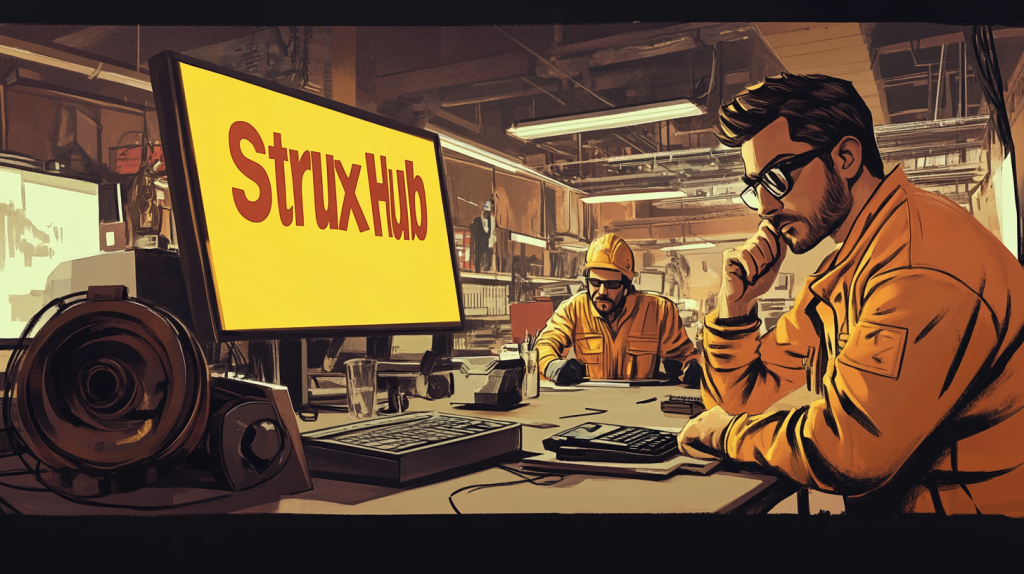
StruxHub: Revolutionizing Project Management in Large Commercial Construction

